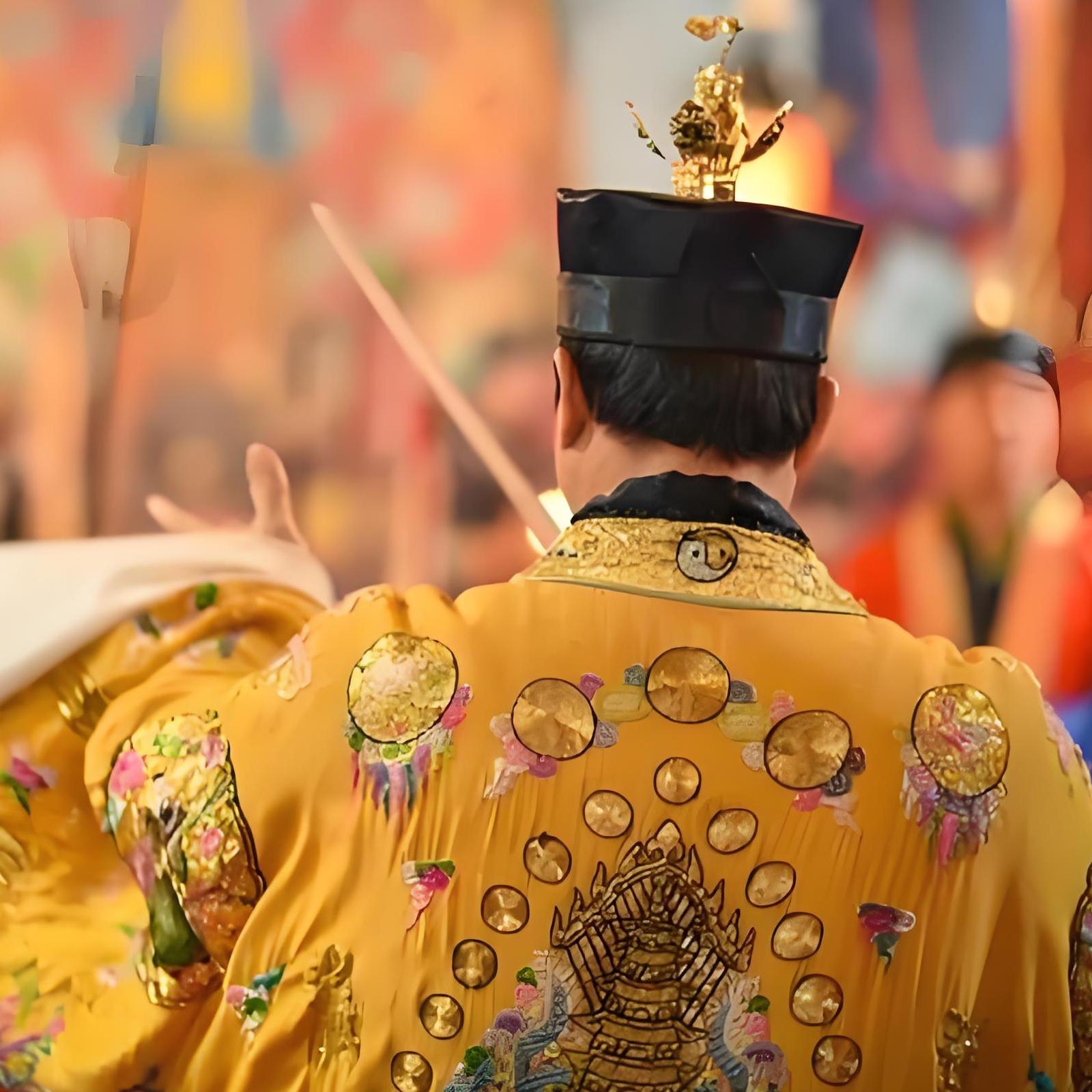A Taoist blessing ceremony, also known as a "Daoist ritual," is a sacred practice performed to bring blessings, protection, and harmony. Here's an outline of the unique steps and precautions typically involved in conducting a Taoist blessing ceremony:
Steps of a Taoist Blessing Ceremony
- Preparation:Location: Choose a clean, peaceful, and auspicious place.Altar Setup: Arrange the altar with Taoist deities’ images, incense burners, candles, offerings (such as fruits, tea, and flowers), and ritual tools.Priests and Assistants: Qualified Taoist priests (Daoshi) lead the ceremony, assisted by disciples or helpers.
- Purification:Self-Purification: The priest performs a purification ritual to cleanse himself, often involving washing hands, changing into ceremonial robes, and chanting mantras.Space Cleansing: The ceremony area is purified using incense, water, and specific chants to remove negative energies.
- Invocation:Chanting Sutras: Priests chant Taoist sutras and scriptures to invoke the presence of deities and spirits.Incense Offering: Lighting incense sticks and offering them to the deities to invite their blessings.
- Main Ritual:Prayer and Offerings: The priest recites prayers, asking for blessings, protection, and harmony. Offerings are made to the deities.Blessing Objects: Items to be blessed, such as talismans, amulets, or personal belongings, are placed on the altar.Sacred Symbols: The priest draws sacred symbols (Fu) or writes talismans to invoke divine protection and blessings.
- Blessing and Protection:Sprinkling Holy Water: The priest sprinkles holy water on participants and objects to bestow blessings.Anointing with Oil: Sometimes, participants are anointed with blessed oil for protection and healing.Chanting and Mantras: Continuous chanting and mantras reinforce the blessings and positive energy.
- Conclusion:Thanksgiving: Giving thanks to the deities and spirits for their presence and blessings.Distribution of Blessed Items: Blessed items are distributed to participants as a token of divine favor.Closing Rites: Final prayers and chants conclude the ceremony, and the altar is respectfully dismantled.
Precautions
- Ritual Purity: Ensure the priest and participants maintain physical and spiritual purity before and during the ceremony.
- Respect and Reverence: Conduct the ceremony with utmost respect and reverence for the deities and the sacred space.
- Proper Training: Only qualified Taoist priests should conduct the ceremony to ensure it is performed correctly and effectively.
- Safety Measures: Handle ritual tools and fire (incense, candles) with care to prevent accidents.
- Cultural Sensitivity: Be mindful of cultural and religious customs, ensuring the ceremony aligns with traditional Taoist practices.
Inclusion of Websites
For more information on Taoist culture and ceremonies, you can visit:
- taoers.com 全球最大道教文化社交网站




